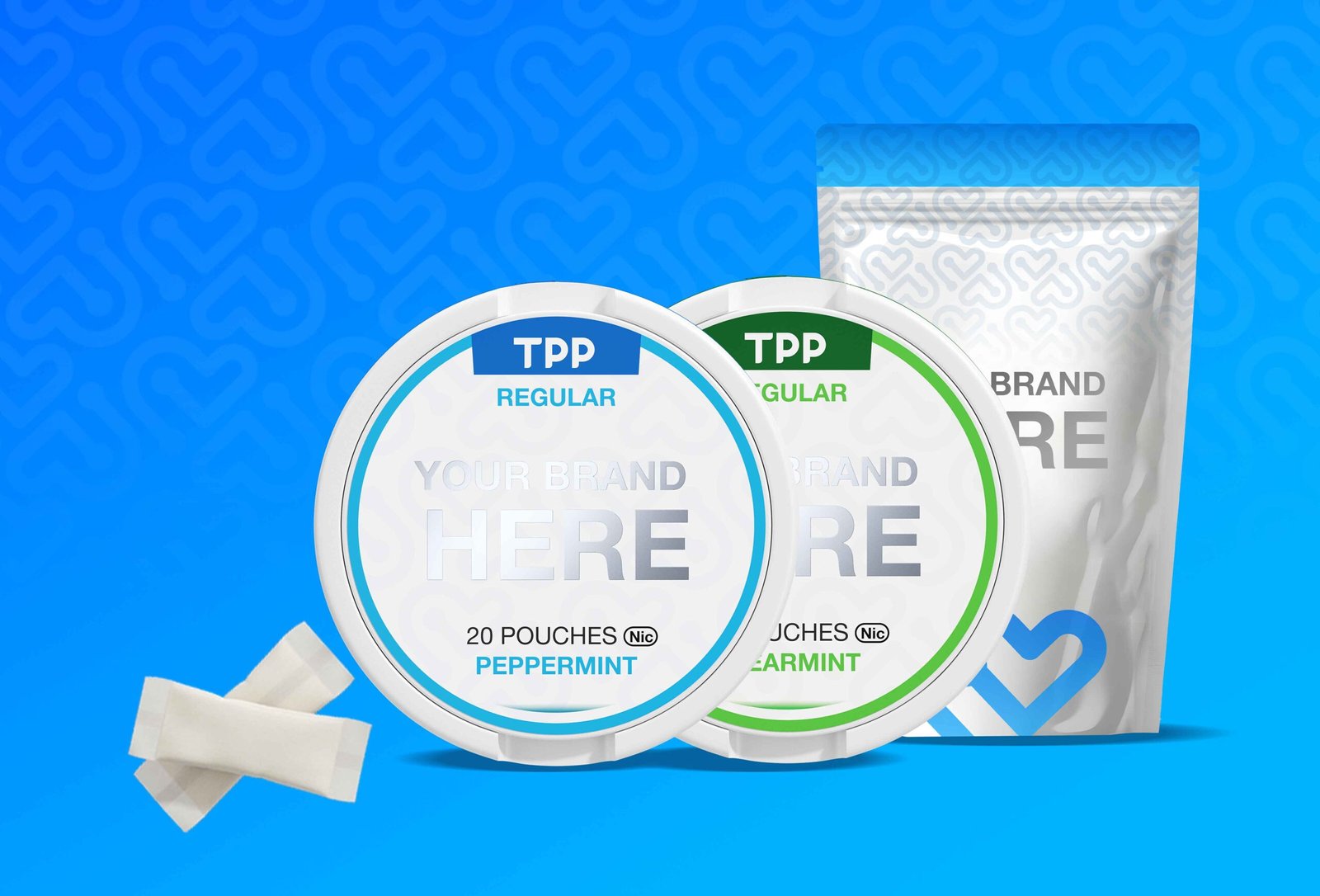Your global oral pouch manufacturer with factories in Sweden and China, we specialize in private-label oral pouches. Consistency of high Swedish quality throughout.

We help brands launch and scale with white-label, private-label, and OEM production – directly from Sweden and China. Our tobacco-free snus products are crafted with precision to ensure quality, fast turnaround, and seamless global distribution.

The Pouch Plug is a trusted white label and private label nicotine pouch manufacturer, offering full-service contract manufacturing for brands worldwide.Whether you’re launching a new oral pouch product or scaling an existing line, we produce customized nicotine pouches under your brand – with consistent Swedish quality, flexible MOQs, and rapid turnaround. Our turnkey manufacturing includes flavor formulation, pouch design, packaging, compliance support, and international distribution – all handled discreetly and reliably.
We are a full-service oral pouch manufacturer, specializing in nicotine pouch production under private label, white label, or OEM models. Our facilities in Sweden and China ensure fast turnaround, regulatory compliance, and consistent Swedish-quality output – whether you’re launching a new pouch brand or scaling an existing one.
We support every stage of your journey: from formulation and pouch development to packaging and international fulfillment – making us a trusted partner for growing nicotine pouch brands worldwide.
A new flavored nicotine product is increasing in popularity – oral nicotine pouches and lozenges.
This product is placed between the cheek and gum. They do not contain tobacco, but they do contain nicotine, flavorings, sweeteners and plant-based fibers. Some popular brand names include Zyn, On! and Velo, and they come in colorful packaging that looks like mint containers.
Although advertising may make it look convenient and appealing, it’s important to know that these products deliver varying amounts of the addictive chemical nicotine, which can negatively impact your learning, attention span and proneness to addiction.


Nootropic pouches are innovative products designed to enhance cognitive function and mental clarity through the ingestion of specific compounds. These pouches typically contain a blend of natural ingredients, vitamins, and minerals known to support brain health and performance.
Each pouch is conveniently pre-portioned for easy consumption, making them ideal for individuals seeking a quick cognitive boost on the go. The ingredients within these pouches often include caffeine for alertness, L-theanine for focus and relaxation, vitamins such as B6 and B12 for overall brain function, and adaptogens like rhodiola rosea or ashwagandha for stress relief.

Don’t take our word for it. See what our customers have to say.
"Exceptional customer service is key to success, and ThePouchPlug delivers just that! Their unwavering support has been instrumental in the success of my business. From prompt responses to resolving queries efficiently, they consistently go above and beyond to ensure satisfaction. Their dedication and professionalism set a high standard in customer service. Thank you, "
"Choosing to embark on this venture means entrusting our future collaborations to your company. Your exceptional service and dedication have instilled unwavering confidence in our partnership. Your commitment to excellence assures us that our business endeavors will thrive under your capable hands. We deeply value the trust and reliability you've consistently demonstrated."
"Your range of products is absolutely amazing, complemented by a team of dedicated professionals who ensure top-notch quality in every pouch. The excellence you consistently deliver sets a standard that is truly commendable. It's a pleasure to engage with a company that prioritizes quality and professionalism at every step of the way."
"TPP's exceptional service and superior products have propelled our business to success. Their unwavering commitment to excellence sets them apart in the industry. We're immensely grateful for their invaluable support, instrumental in achieving our goals. Their dedication and reliability exceed expectations, making them partners in our journey."
"TPP's steadfast dedication to excellence and exceptional support render them invaluable partners in our journey. Their top-tier quality has been instrumental in our success, and we're deeply grateful for their unwavering commitment. TPP, your pivotal role in our growth is sincerely appreciated. Thank you for being an indispensable cornerstone of our success story."
Your full-service nicotine pouch manufacturer – white label, private label, or Contract Manufacturing.
Our process begins with a strategic consultation to understand your product goals, regulatory landscape, and target markets. When launching you're a nicotine pouch brand, we tailor the entire process to your needs.
From private-label design to flavor customization, we help you create standout oral pouches. Choose everything from pouch format and size to active ingredients, flavor profiles, and packaging design.
Transform your brand into reality with our sourcing and production expertise. We prioritize quality and consistency, ensuring each nicotine pouch meets the highest standards.
Leverage our market insights and strategic guidance for a successful debut. Our integrated services in warehousing, packaging, and distribution ensure efficient product reach to your target audience.
We support your go-to-market strategy with integrated services in warehousing, custom labeling, and global distribution. As your long-term partner, we adapt production as your brand grows – from small MOQ pilots to high-volume global scaling.
Our team of experts is available for your support, to answer your questions and guide you every step of the way.
© 2024 The Pouch Plug. All rights reserved.